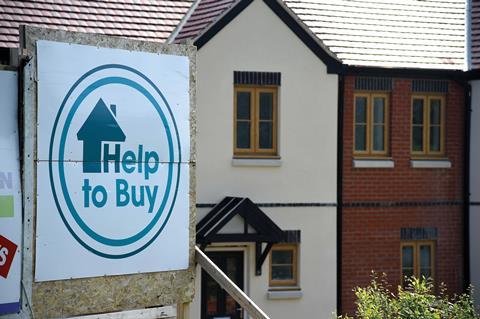Government might struggle to recoup the £11.7bn loaned to new-build homebuyers

The government’s multibillion-pound Help to Buy loan scheme could prove to be a risky investment, according to both the head of the National Audit Office and the chair of the influential Public Accounts Committee of MPs.
If property values fall sharply the government’s ablility to recoup the near £12bn it has loaned out to buyers of new-build homes in England could come under pressure, according to the National Audit Office (NAO) boss Gareth Davies.
A report by the NAO said that in the five years after the scheme’s 2013 introduction, £11.7bn was loaned to 211,000 buyers, but more than 8,000 of these had household incomes in excess of £100,000 and probably didn’t need the subsidy.
Under the scheme, which is not means-tested, the government offers an equity loan of 20% of the market value of an eligible new-build home, with no interest payable for five years. Homebuyers only need to find a deposit of 5%.
Help to Buy was set up to help those who want to buy a new home but cannot raise enough cash for a sizeable deposit.
In 2016 the interest-free equity loan available was expanded in London to 40% of a new-build home’s market value, across the capital.
Last October the chancellor of the exchequer, Philip Hammond, announced that Help to Buy would be extended until 2023 but that from 2021 it would apply only to first-time buyers while it was being scaled down.
The NAO said the scheme had supported five of the largest developers in England to increase the overall number of properties they sold year-on-year, “thereby contributing to increases in their annual profits, which have all increased since the scheme’s start.
“These five developers sold between 36% and 48% of their properties with the support of the scheme in 2018,” the NAO added.
The Ministry of Housing, Communities and Local Government (MHCLG) said Help to Buy had boosted new-build housing supply by 14.5%, but NAO boss Davies warned there could be consequences for the public purse in the event that property values fall.
“Help to Buy has increased home ownership and housing supply, particularly for first-time buyers. However, a proportion of participants could have afforded to buy a home without the government’s help. The scheme has also exposed the government to significant market risk if property values fall, as well as tying up a significant public financial capacity.
“The government’s greatest challenge now is to wean the property market off the scheme with as little impact as possible on its ambition of creating 300,000 homes a year from the mid-2020s. Until we can observe its longer-term effects on the property market and whether the department has recovered its substantial investment, we cannot say whether the scheme has delivered value for money,” Davies added.
Meg Hillier, Labour MP and chair of the Public Accounts Committee – which monitors government expenditure and seeks to ensure ministers are held accountable for their department’s spending – agreed with the NAO’s asessment and said its report had found that the government’s investment was “not without risk”.
She added: “MHCLG must safeguard its investment of taxpayers’ money and it will need to exercise caution in winding down the scheme if it is to minimise negative effects on the housing market.”
Responding to the NAO report, housing minister Kit Malthouse said: “Help to Buy has been genuinely life-changing for first-time buyers across the country, helping them secure their first step on the property ladder.
“Not only has it supported more than 170,000 first-time buyers, it has increased home building by nearly 15%, and is set to make a profit for the public: it’s been a win-win.
“From 2021 the scheme will be extended and strengthened to make it exclusively for first-time buyers to support those who need it most.”
Help to Buy key statistics
352,000: the number of home purchases the MHCLG forecasts will be supported by the scheme by March 2021
£11.7bn: the total loaned under Help to Buy up to December 2018
37%: the percentage of buyers in England who say they could not have afforded a new home without Help to Buy
8,440: the number of buyers using the scheme who had household incomes in excess of £100,000 at the time of using Help to Buy
38%: the proportion of all new-build homes sold using the scheme between April 2013 and September 2018
2031/32: the year which MHCLG expects it will have fully recouped its Help to Buy investments.
Source: NAO/MHCLG










No comments yet